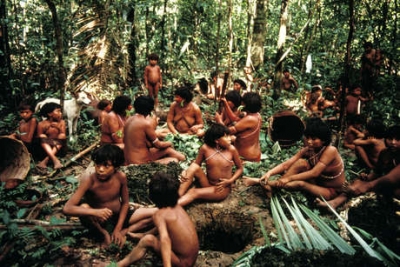
The Yanomami, also spelled Yanomamo, are a group of approximately 38000 indigenous people found living in the rainforests and mountains of Northern Brazil and Southern Venezuela. About 250 villages of varying sizes belong to this tribe.
The Yanomami territory in Brazil alone is twice the size of Switzerland. This area, combined with the Venezuelan territory, forms the largest territory for indigenous people in the world.
Yanomami people live in a communal system. An entire village lives together under a single oval-roofed communal house called shabono. Some shabonos can shelter as many as 400 village members! Shabonos are made from plant matter and have a central open area for holding rituals, feasts, and games. These degradable roofs are reconstructed every 4 to 6 years.
The Yanomami tribes are better known as horticulturalists, hunters, and fishers. The male members do the hunting and the women cultivate crops. Crops form about 80 per cent of the tribe’s diet and are produced by using the slash-and-burn method. Apart from these crops such as fruits and vegetables, protein-rich meat from hunted animals and fish too completes their diet chart.
Once the lands become exhausted of their fertility and are no more fit for cultivation, the Yanomamis migrate to more fertile grounds and start life all over again. This is called shifting cultivation.
Threats from gold miners and colonisers, coupled with extensive road development activities, have polluted their lands and driven these people out of their natural homes.
Picture Credit : Google




